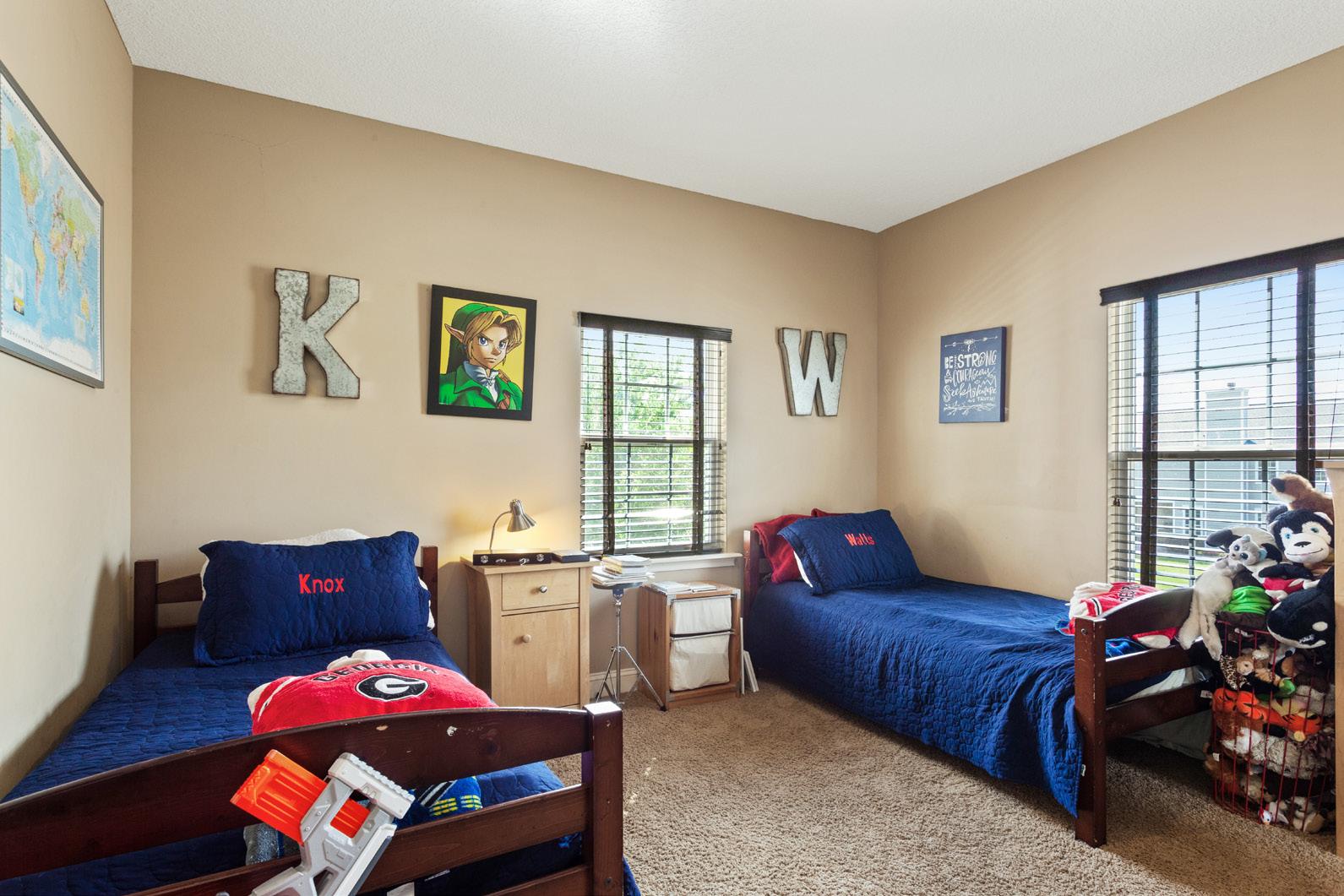
4 minute read
How to Handle Sibling Room-Sharing
There’s bound to be sibling conflict when your children share a room, but there are things you can do to reduce it.
How to Keep the Peace When Your KIDS SHARE A ROOM
BY JAIMIE SEATON
Jaimie Seaton has been a journalist for more than 20 years, and is the former Thailand correspondent for Newsweek. Her work on divorce, parenting, dating, and a wide range of topics has been featured in the Washington Post, the Guardian, Glamour, and numerous other publications. Follow her on Twitter @JaimieSeaton. Have your children put on their thinking caps to find a solution to their problem.
When your kids share a room, there’s bound to be conflict. So follow these 10 easy tips to reduce the sibling conflict and rivalry and keep the peace.
We can’t all live in spacious houses. Families often have to get creative with how they use their space—and siblings might have to share a room. Laura Markham, Ph.D., founder of Aha! Parenting and author of Peaceful Parent, Happy Siblings, advises parents start by explaining the situation.
Tell your children: “We do need you to share a room with your brother/sister. I realize that’s asking a lot of you, and I want you to always feel like you can come and talk to me if you get upset by anything. And we’ll put on our thinking caps and find a way to solve whatever the problem is.”
10 TIPS TO REDUCE CONFLICT WHEN SIBLINGS SHARE A ROOM
There are bound to be ups and downs, so Dr. Markham offers these tips for reducing sibling conflict in a tight space.
Expect bumps and don’t give up. There will be a transitional time when you first put your kids together, so expect difficult nights and have a back-up plan. If your baby is used to sleeping with you, first move her to a crib in your room. When she moves to the elder sibling’s room, and if she cries excessively, move her to the living room for the night so the elder child can sleep.
Put sleep first. If you’re moving a baby into an older sibling’s room, make sure the baby can sleep through the night so he’s not waking the older child. Consider using a white noise machine to help both children sleep.
Start during vacation. If you are transitioning baby or simply putting two siblings together for the first time, try to make the change over a long weekend or vacation when everyone can sleep in and there is less pressure.
Let young children share a bed. When your youngest child is old enough to sleep safely with a sibling, push two twin mattresses together on the floor. This can be a great way to foster closeness, and when the children get older and want their own bed, you can pull the beds apart.
Secure their treasures. We want to teach our kids to share, but they should also have a place where their prized possessions (such as a model they built or a favorite book) are just theirs. Have a locked cabinet where each child can store their treasures. This is especially important when one of the siblings is a toddler or young child who may not understand boundaries.
Designate the bedroom a quiet space. Sometimes one child needs more downtime than the other. Defining the bedroom
Have your children put on their thinking caps to find a solution to their problem.

as a quiet place and relegating louder activity to family spaces can go a long way toward a peaceful home.
Create separate spaces. The most common reason kids have a hard time when they share a room is privacy. Set up play tents or bed canopies with curtains, so each child can feel they have their own cocoon. With older siblings or siblings of different genders who need even more privacy, divide the room in half using bookcases or even a sheet to create a temporary wall.
Validate their feelings. If your kids want privacy, it doesn’t mean there’s something wrong. Your children shouldn’t be made to feel disloyal to each other if they want space. Let them know it’s okay.
Work to solve conflicts. If kids are having an irreconcilable difference, some family counseling might be in order. If you have teenagers who are at each other’s throats, counseling can help to uncover the underlying issues. It can also help them develop the ability to communicate safely and express their needs.
If all else fails, separate them. If you absolutely have to, consider giving the living room to one of the kids, or the parents, until the living situation changes (the older child goes to college or you move to a larger space).
Dr. Markham also urges parents to be flexible—you’re not going to be able to set up the situation and leave it until your kids move out or you’re able to move to a home or apartment with more rooms. Communicate frequently with your children and make adjustments according to what works best for them. And remember, sharing

Privacy is a must when sharing a room. Create separate defined spaces.
a room is teaching your children to be resilient and adaptable—and they’ll likely grow up to be better sleepers.



